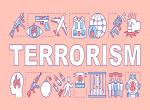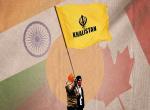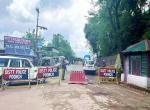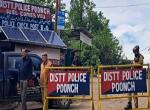Until very recently in India, there have been several interpretations of threat perceptions of Daesh or the Islamic State of Iraq and Syria (ISIS). This was primarily because few Indian Muslims joined the outfit in Syria or Iraq and there has been, so far, no attack conducted by it within the country. As a result, some do not view it as a major threat while there are others who remain wary, particularly considering the outfit’s export of terror ideology worldwide. As a matter of fact, the departure of four Muslim youths from Kalyan in Maharashtra to Iraq in July 2014 received some attention but failed to trigger an immediate concern. It was after the return of one of them—Arif Majeed—which exposed certain previously unknown facts. Some of them include the role of social media in radicalisation/recruitment, presence of insiders who make necessary arrangement for travel, and the nexus between Indians in the country and abroad, particularly in the Gulf countries.
With the passage of time, Daesh-connected activities in India are on the rise and are no longer dormant or intermittent. In a quick succession, security agencies, mainly the National Intelligence Agency (NIA), Anti-Terrorist Squad (ATS) and state polices, have arrested approximately 54 Daesh supporters/sympathisers over the last few months.1 The unfolding should, however, dispel the myth that Indian Muslims are immune to the lure of Daesh propaganda and only a few youths joining the outfit would hardly make any difference. This myth is created mostly by comparing the size of the entire Muslim population (which is approximately 180 million) and those who actually joined the terror outfit, which is believed to be little over 20 in numbers. Moreover, geographical distance is not anymore a barrier which prevents radicalised persons from travelling to be in the caliphate of the self-proclaimed Caliph, Abu Bakr al-Baghdadi. Despite a strict surveillance being put into place in India, instances of radicalisation and recruitment have gradually been discovered, and are a matter of concern. This is happening at this stage when Daesh’s ‘doomsday’ is repeatedly predicted by various strategists and analysts by looking at the current scenarios in Syria and Iraq.
Since its inception, Daesh upholds the significance of expanding its influence far and wide. The influx of thousands of foreign fighters into Syria and Iraq not only added to its manpower but also boosted its morale. However, the continuous loss of its territories has become a major setback, and as a result, it is now exporting its terror ideologies and staging attacks in distant foreign lands. The attacks in France, Belgium, the United States (US), Libya, Turkey, Lebanon, Saudi Arabia, Kuwait, Yemen, Bangladesh, Afghanistan, Indonesia, Philippines, etc. are some of the manifestations. While ‘frustration’ is commonly referred to as a triggering factor for carnages, the group has already inspired several local terror organisations as well individuals with a leaning towards radicalisation. Therefore, while, on one hand, it is losing grounds (in West Asia), successful penetration of its influence in other countries, on the other, is sustaining its profile as an organisation which the international community has to continuously fight against. One should be mindful of the fact that Daesh has long transformed from a mere physical entity that could be toppled militarily to an idea which is getting harder to counter. It is the latter phenomenon which is currently seen in India where radicalised individuals are succumbing to the pernicious ideology and are trying to leave an imprint through violence.
Since the beginning of 2016, several Daesh-linked persons—sympathisers, recruiters and supporters—have been arrested, including the alleged head of India’s Daesh wing, Muddabir Mushtaq Shaikh from Maharashtra, in January. He was reportedly a close associate of his Syria-based handler Shafi Armar alias ‘Yousuf’. Muddabir was also the “emir” of Janood-ul-Khalid-al-Hind, the IS inspired radical outfit”.2 This was a breakthrough development as several others were nabbed. They exposed the mechanisms of recruitment (with the help of insiders and via social media forums), existence of similar type of people in different Indian states, conduct of training-related meetings in Karnataka, Maharashtra, Uttar Pradesh, and Telangana. During investigations, the arrestees also revealed their plans to carry out attacks in strategic locations in Delhi and during festivals such as Kumbh Mela and Republic Day celebrations. While the attempts were foiled, interrogations from the follow-up arrests mentioned similar plans. Unlike the normal circumstances, terror plans were plotted from a couple of sleepy towns in the state of Uttarakhand. This has indicated the expansion of Daesh’s influence in the country. More alarming aspect is the alleged bomb-making lesson these people received through online contents, and by using readily explosives such as hydrogen peroxide, ammonium nitrate and potassium chlorate. Given the considerable use of internet medium and presence of people from technical backgrounds, improvisation of even low-grade explosive will not be a difficult task. Considering these developments, it is undeniable that Daesh and its operatives in India are planning for a showdown (sooner or later) and if succeeded, that will leave a serious message proclaiming, We can strike here, too!
As mentioned earlier, the rising Daesh-linked activities in India is taking place at this juncture when terrorism is taking numerous forms and there is no single pattern to their mode of operations. This has been widely observed, particularly in the US and Europe where highly motivated and radicalised individuals targeted vital establishments such as airports and popular avenues, including malls, stadiums, discotheques, theatres, etc. While all of the attacks could not be attributed to the direct involvement of Daesh, the cases of ‘lone-wolves’ drawing inspiration from this outfit is rising exponentially. Every allegiance pledged to Daesh by an attacker or group of people, irrespective of the nature of the crime, adds to the credibility of the organisation despite its reverses in Syria and Iraq. The possibility of an attack, either by Daesh operatives or inspired supporters in India, should not be a surprising eventuality. The Dhaka attack should be a warning bell for India as this ghastly incident highlighted the threats from ‘home-grown’ extremists. The conducts of these people are difficult to detect and prevent.
Without exaggerating Daesh threat, concerned authorities and the civilians should at least be aware of the fact that India is very much under the radar of this group. The threat need not necessarily come from Syria/Iraq but from those radicalised youths who are aping the outfit’s tactics and strategies to perform the dirty job. Regardless of how many impressionable people paid heed to the 22-minutue video clip released in May by Daesh,3 with a specific focus on India and South Asia, it coincided with the rising cases of radicalised Muslim youths who are either allegedly travelling to Syria or are planning operations by remaining in the country. Beyond using Syrian humanitarian crisis as one of the recruiting factors, the outfit is trying to invoke anti-state sentiments by referring to the “violence against Muslims in many places, including Mumbai, Gujarat, Assam and Moradabad.” 4 Meanwhile, the reports of 21 youths gone missing from Kerala and a few allegedly joining Daesh, and arrests in Hyderabad by the NIA are extremely disturbing. Many of these people have had access to weapons systems, possessed lethal explosive-related chemicals, and received financial assistance from their handlers, both in India and abroad. For instance, the discovery of triacetone triperoxide (TATP), a chemical which the Daesh suicide bombers used in Paris and Brussels, from one of the arrestees’ basement in Hyderabad5 raised eyebrows as to whether the Hyderabad module was preparing for a suicide attack. This would have triggered the first use of TATP in India.
Indeed, the country, so far, has been fortunate as the terror plots by these radicalised people have been busted before they could achieve their objectives. In the wake of this, gradual unfolding of Daesh-linked activities in India should not be taken lightly. The rising phenomenon of youths getting radicalised in different Indian states should also be monitored closely, and be dealt accordingly. This is where coordination between civil society and security establishments is crucial. Incitement to violence in person or through social media tools by influential leaders or ideologues in India needs to be countered ideologically. A strict vigilance should be maintained along the borders of West Bengal and Assam from where Daesh-linked elements can enter into India from Bangladesh. As some of the brazen Daesh inspired/directed carnages in the West were carried out by lone-wolves or home-grown extremists, Indian security planners should learn from the modus operandi of the attackers and take necessary steps to prevent similar strikes. The challenges ahead are enormous as it is not only a fight against individuals or a terror group but also against an idea which is brewing violence, sectarianism and hatred.
Endnotes:
- “54 ISIS supporters arrested: Govt”, The Times of India, 26 July 2016.
- “Making of a jihadi: How Mudabbir Mushtaq Shaikh became Indian face of Islamic State”, The Economic Times, 9 February 2016
- “Islamic States Releases video allegedly showing Indian jihadists fighting in Syria”, The Indian Express, 20 May 2016.
- “Coming to avenge Babri, Kashmir, Gujarat, Muzaffarnagar: ISIS video”, The Indian Express, 21 May 2016.
- Explosives links Hyderabad to Paris & Brussels”, The Times of India, 1 July 2016
Published Date: 1st August 2016, Image Source: http://indiatoday.intoday.in
(Disclaimer: The views and opinions expressed in this article are those of the author and do not necessarily reflect the official policy or position of the Vivekananda International Foundation)











Post new comment